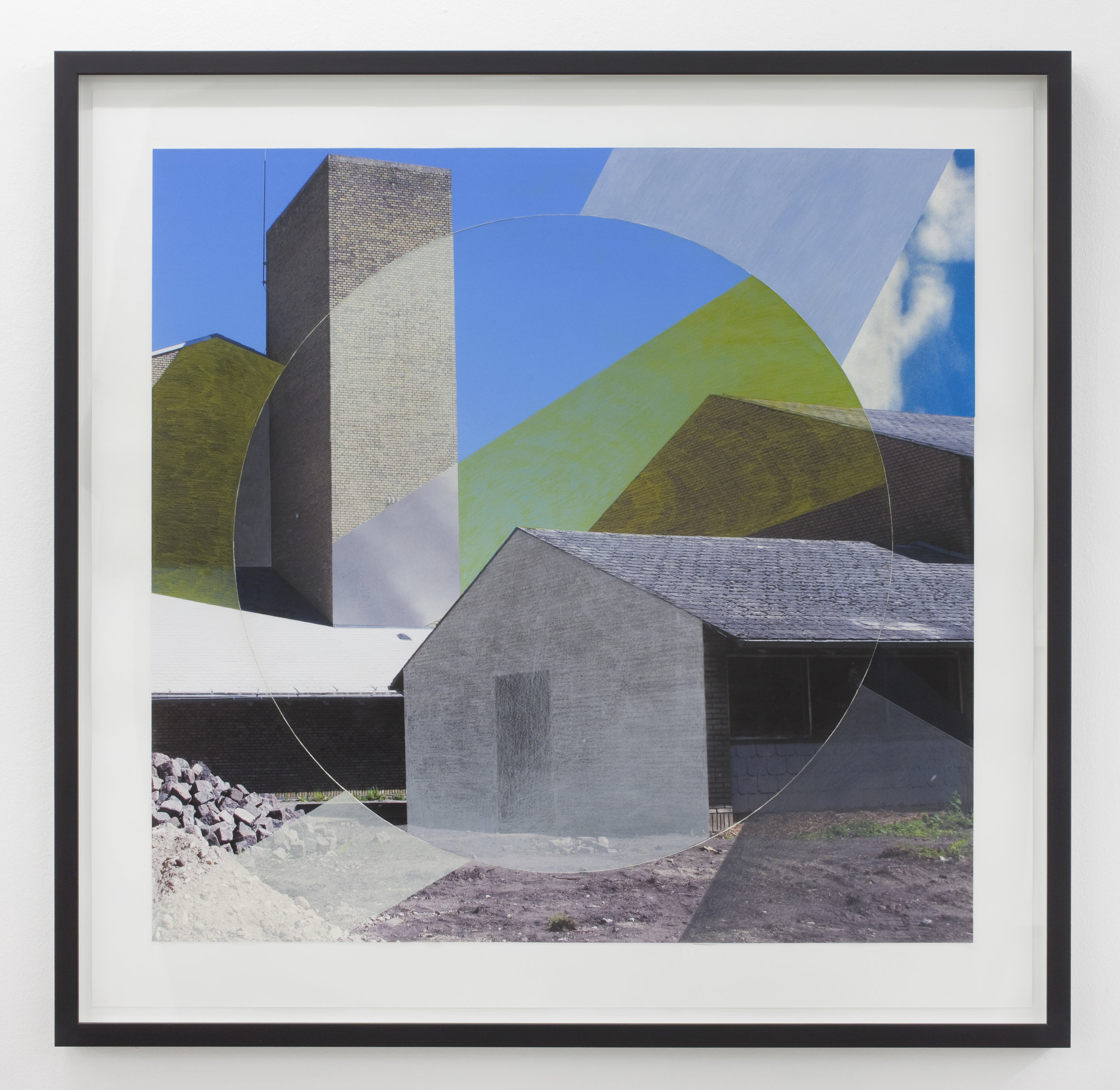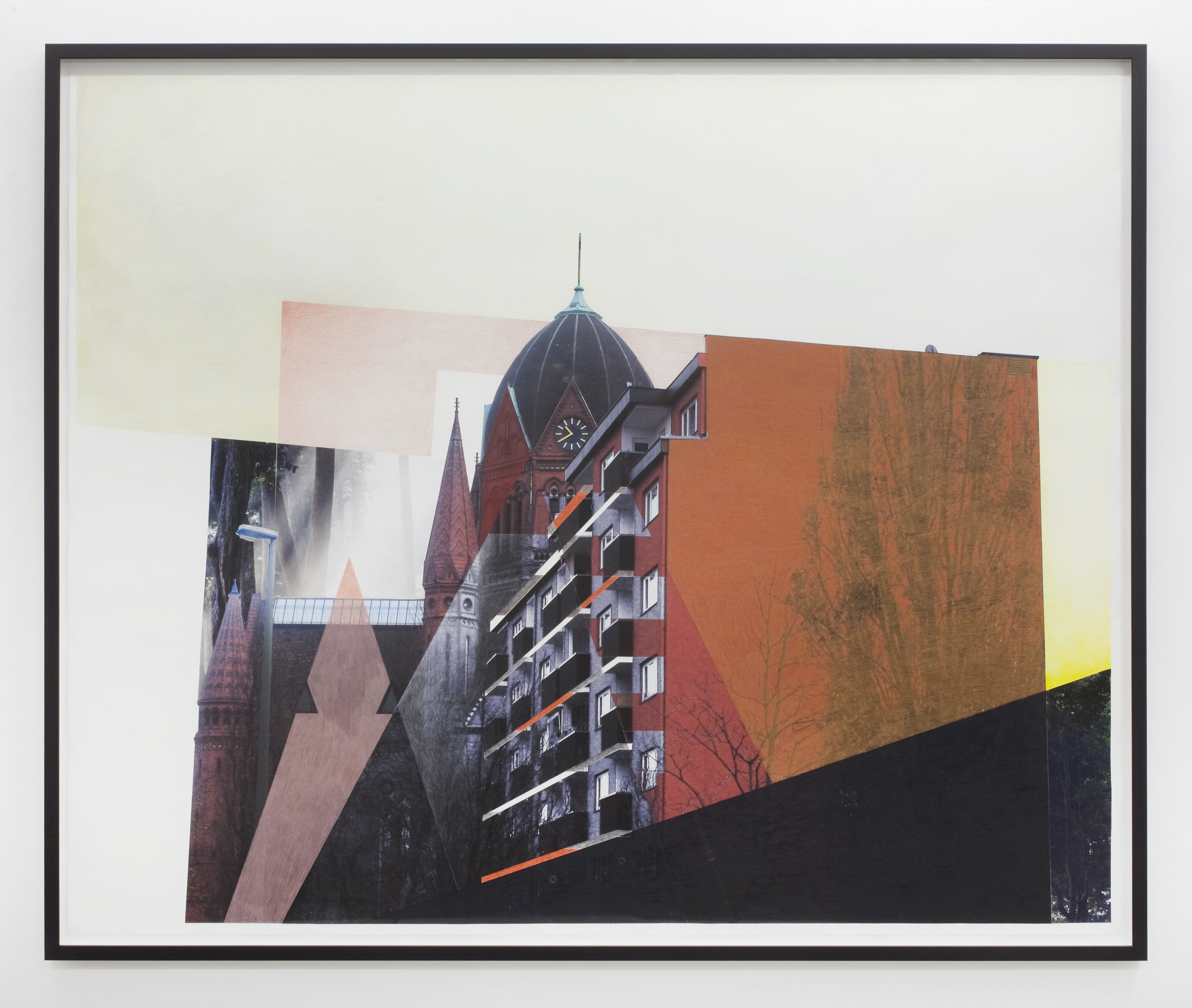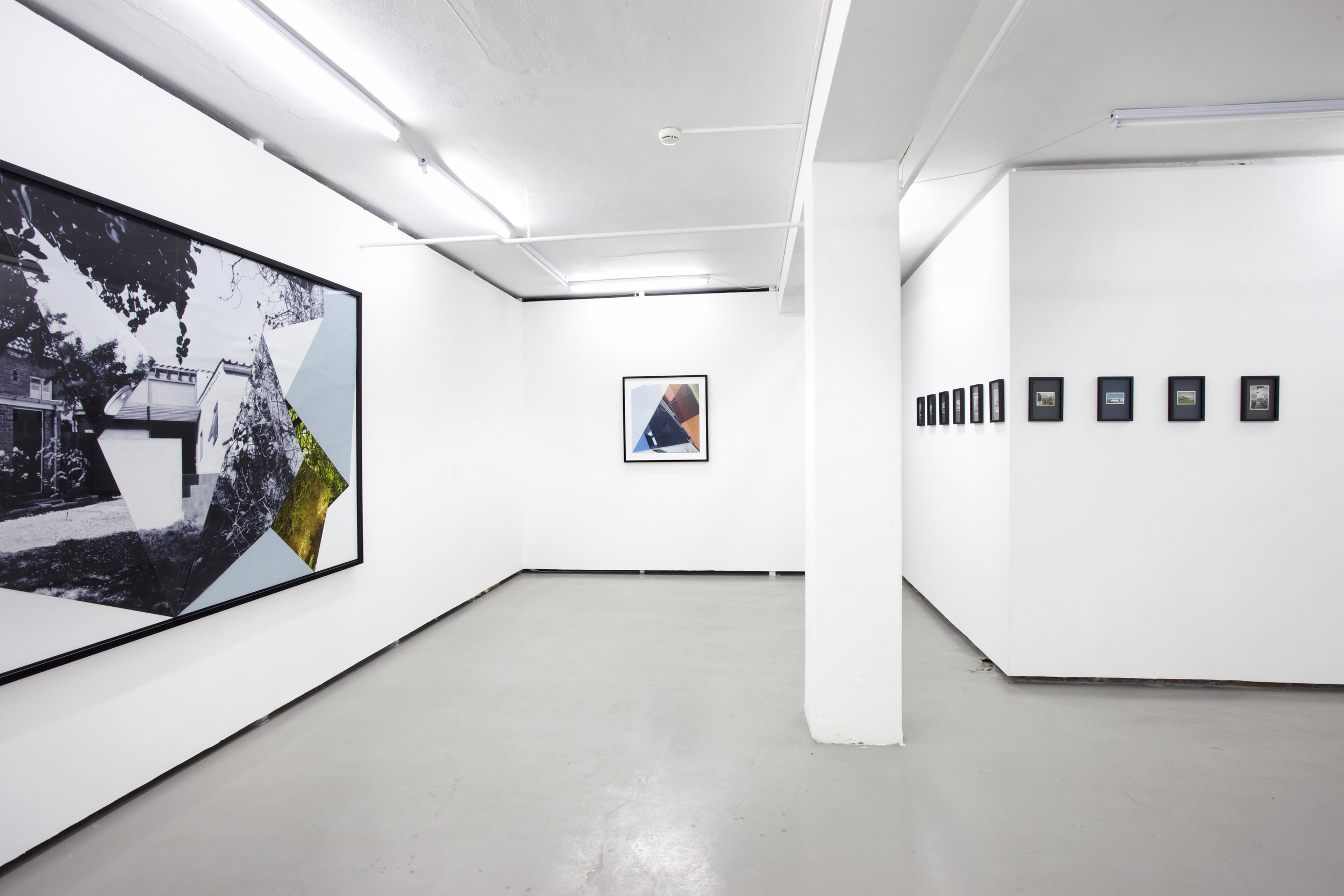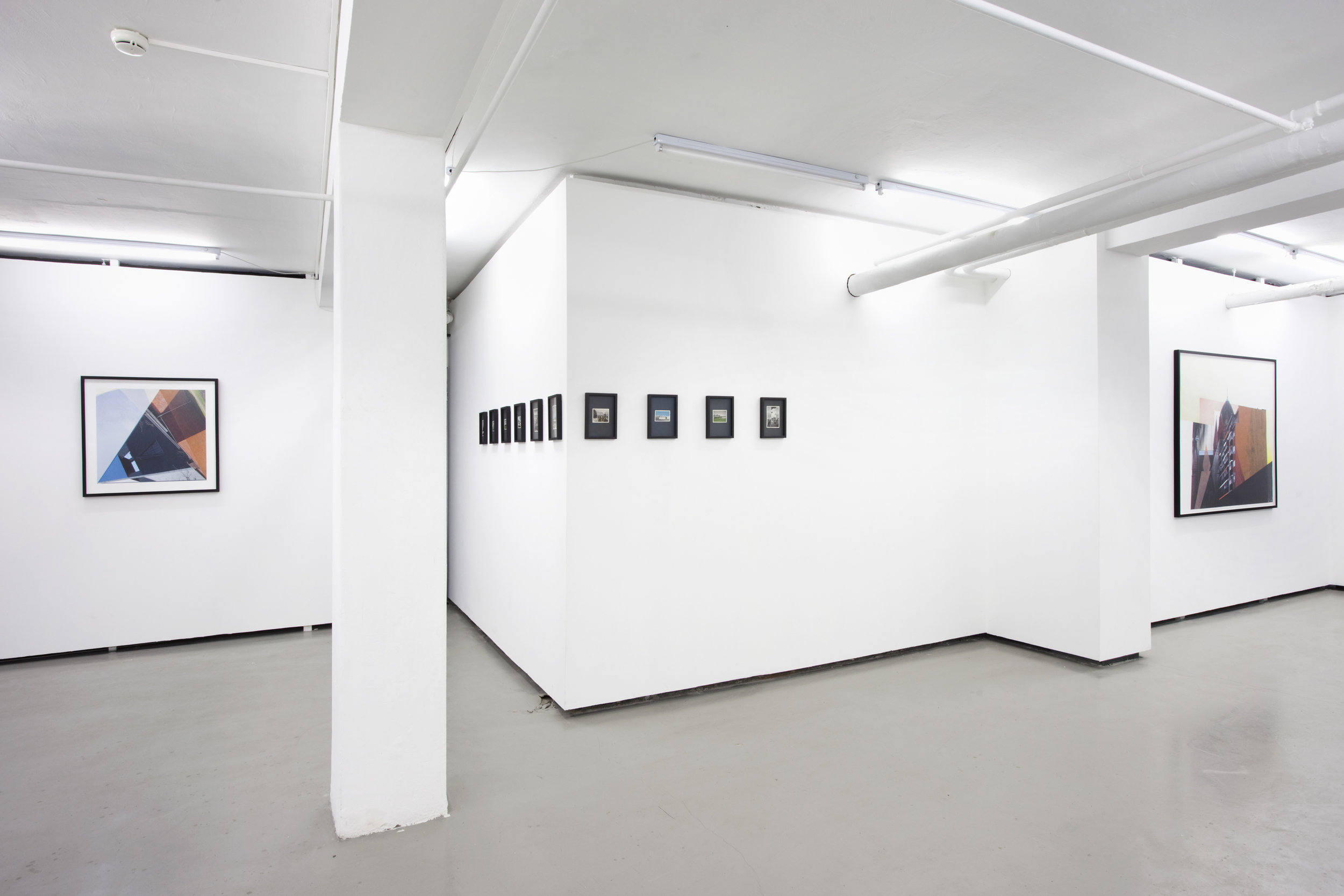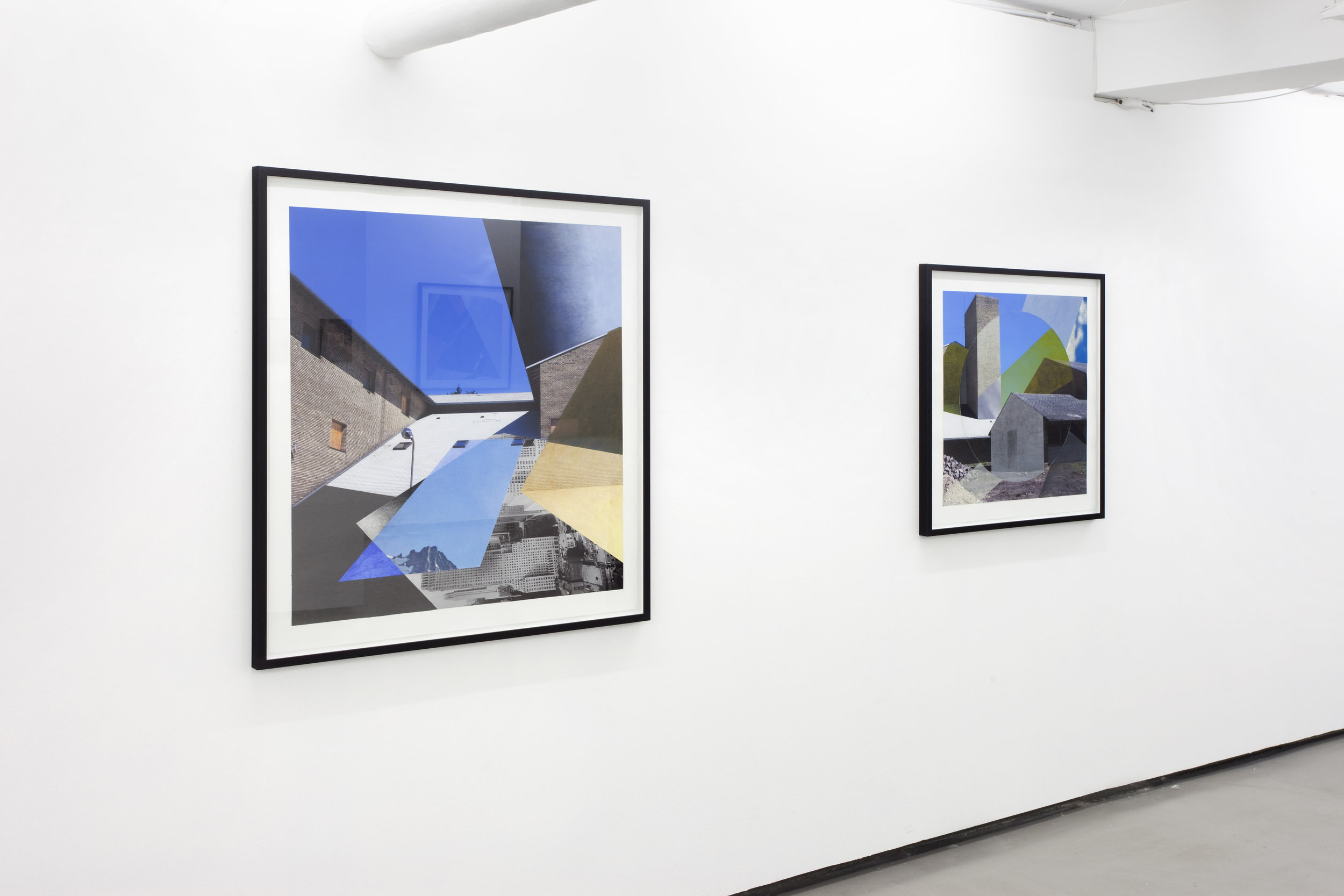Prosepect Point
Soloshow at Peter Lav Gallery 2012
Prospect Point
Peter Lav Gallery
17 August - 22 September 2012
»Architectural photo collage« might have been a fitting umbrella term to describe Julie Boserup’s works, in which new pictures of houses and large buildings have been cut through, turned upside down, edited and put together anew. The architectural element is reflected in her way of »building a picture« as well as in the motifs of the pictures. The building stones consist of analogue and digital techniques. A series of pictures from magazines, newspapers, books and architecture magazines, as well as her own photographic snapshots, is trimmed and put together, forming collages, which are then drawn upon, sketched, photo copied, cut and folded. All this result in works representing new spaces, which are created by the deformed and amputated buildings and the distorted spaces lacking perspective that occur when the different surfaces are put together.
Julie Boserup is interested in architecture and urbane landscapes. The architectural experience or the feeling of being in a city is »translated« into a two-dimensional surface, without regard to the three-dimensional point of departure. The shrub next to the house or the doves on the roof are allowed to play a role that is as prominent as that of the building, the original object of depiction. All layers are put on the same footing, because they are all important to our experience of certain places.
In the exhibition Prospect Point, a series of new works is presented, the point of departure of which is Boserup’s own photographs from Copenhagen and Berlin. The Danish motifs are based on stale modernistic architecture, for instance Holger Jensen’s church formed as a pyramid, Lundehus church and Steen Eiler Rasmussen’s building complex in Tingbjerg. Inspired by architectural montages from the 1940s, 1950s and 1960s, Boserup returns to the surface part of the architectural drawing in order to examine the vision behind these places – which stagings and possibilities did these places contain at that time. Which explains why the series is called Prospect Point, promising a bright future as well as offering a general view when used in connection with tourist vantage points.
By putting together in the invidual collage elements of widely different materials and colour schemes, kaleidoscopic play occurs between the surface and the spacial relations, which is the strength of the collage. At the same time, these new compositions are important to our understanding of the contents of the works and to the way we perceive them. In Boserup’s contrastive composition of pictorial elements and colours, which differ from each other as regards contents and style, the individual parts appear more clearly. When nature and culture are contrasted, or when classical architectural icons are put together mercilessly, we become aware of the characteristics of the individual buildings because of the way it differs from the other elements in the work. The gaze focuses on the individual parts and reminds each element of its characteristics and of what it is that separates it from the other elements. Both in terms of content and form, the viewer comes to understand how architecture has developed through the years, but also how the style of photographs of architecture has changed. What illustrates this development is the constitution, and it is the thought of losing the general view and the perspective that make us see the otherwise so well-known buildings around us with different eyes.

